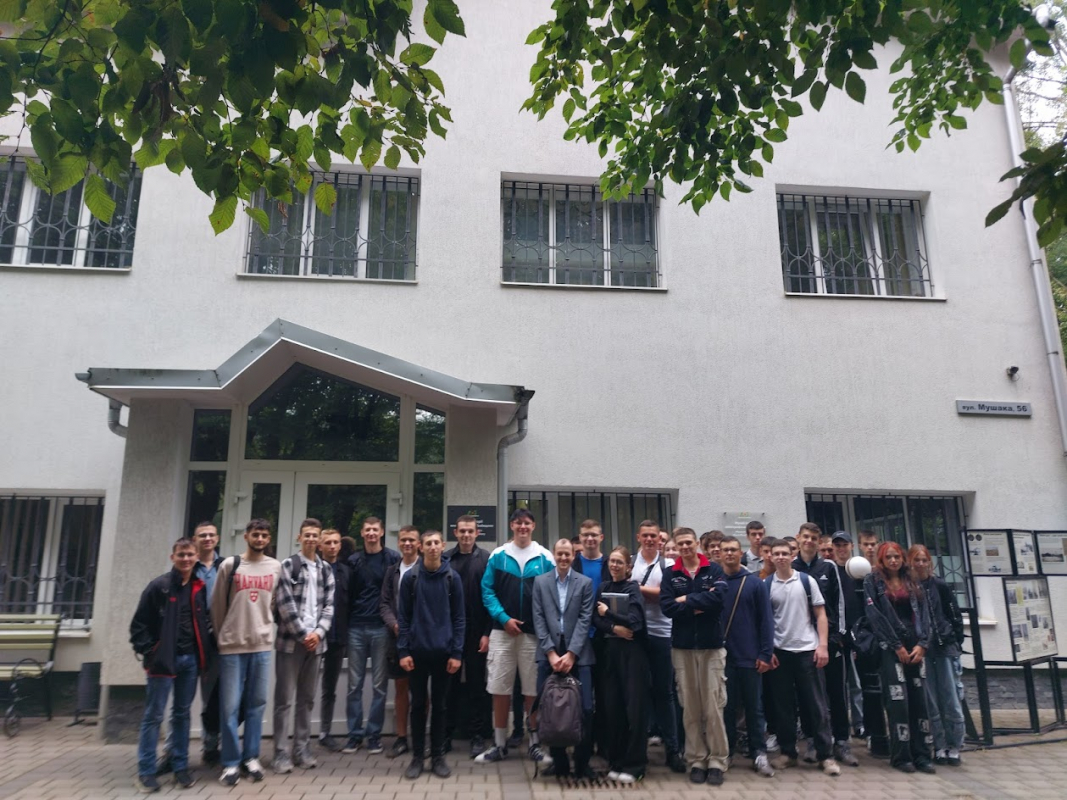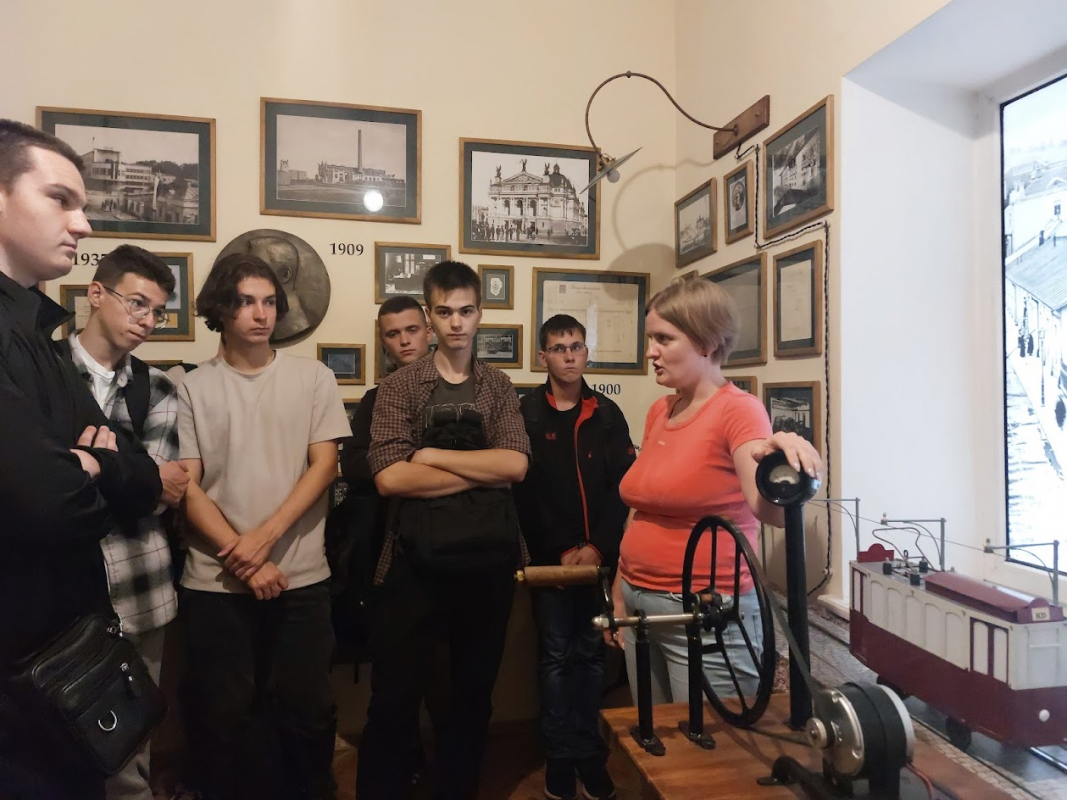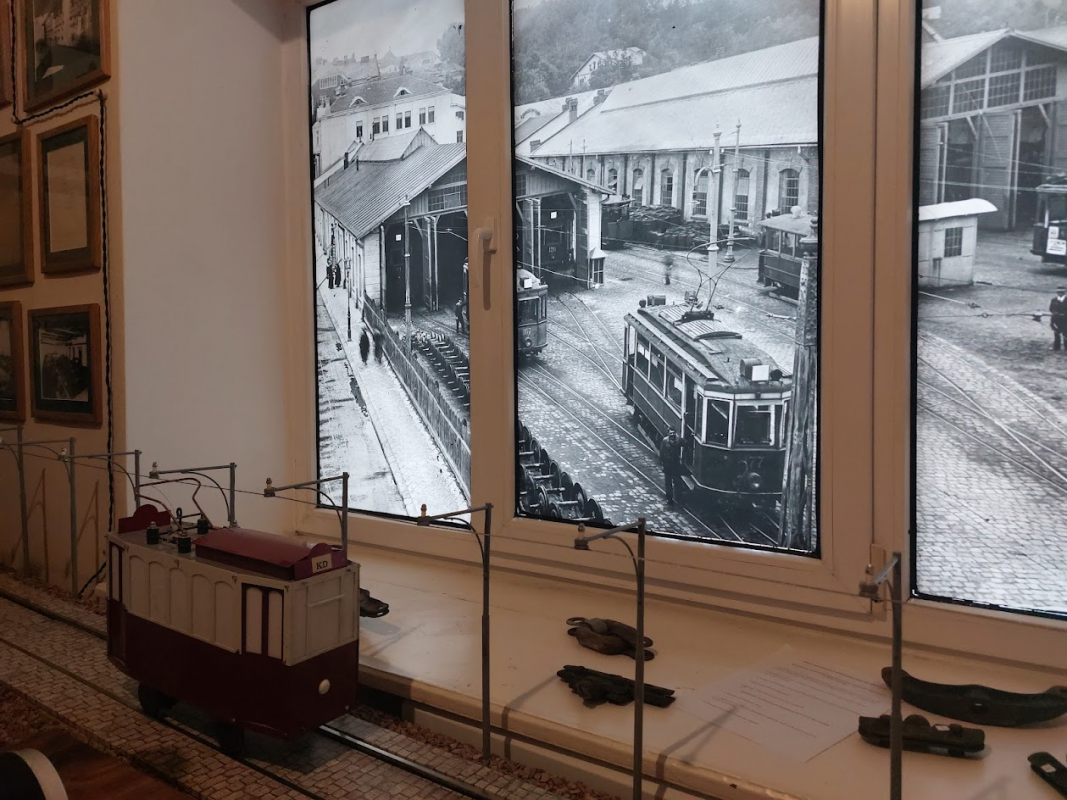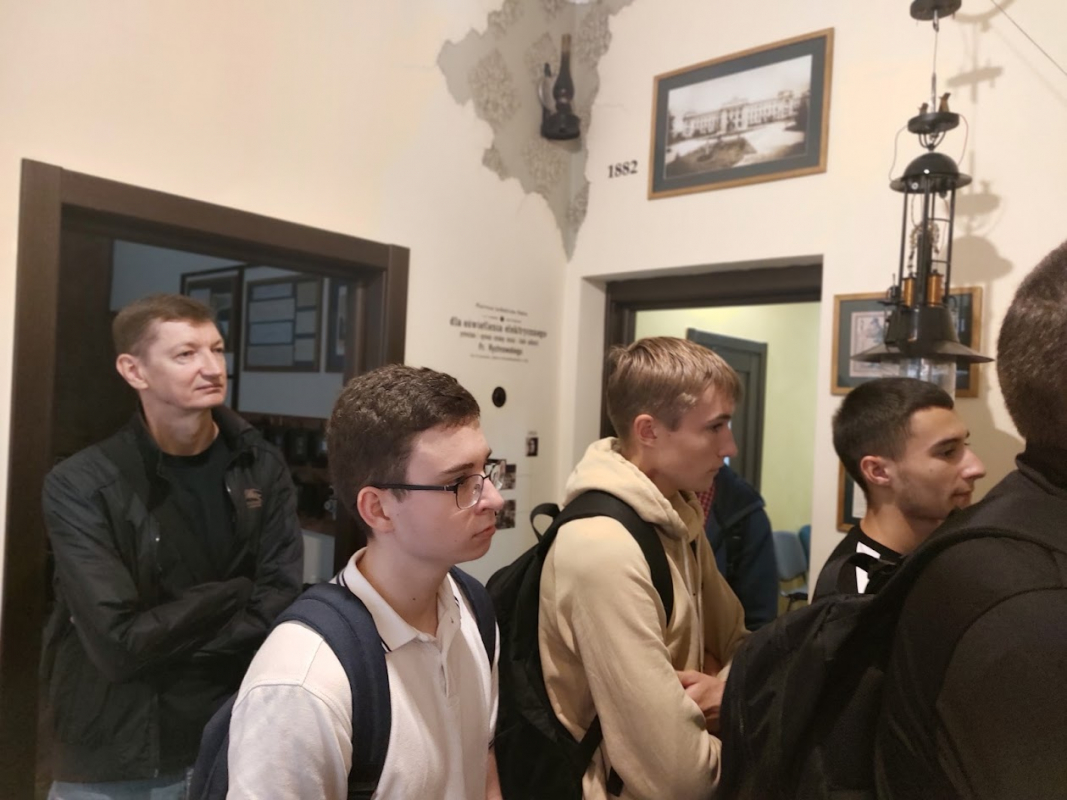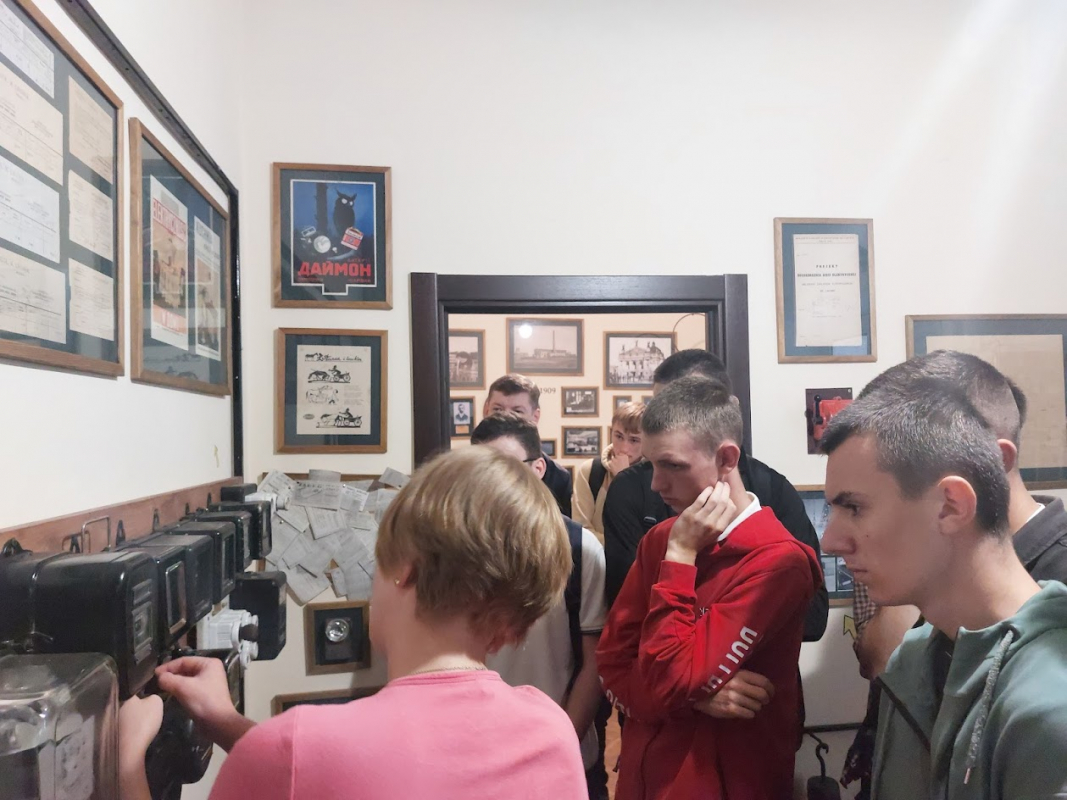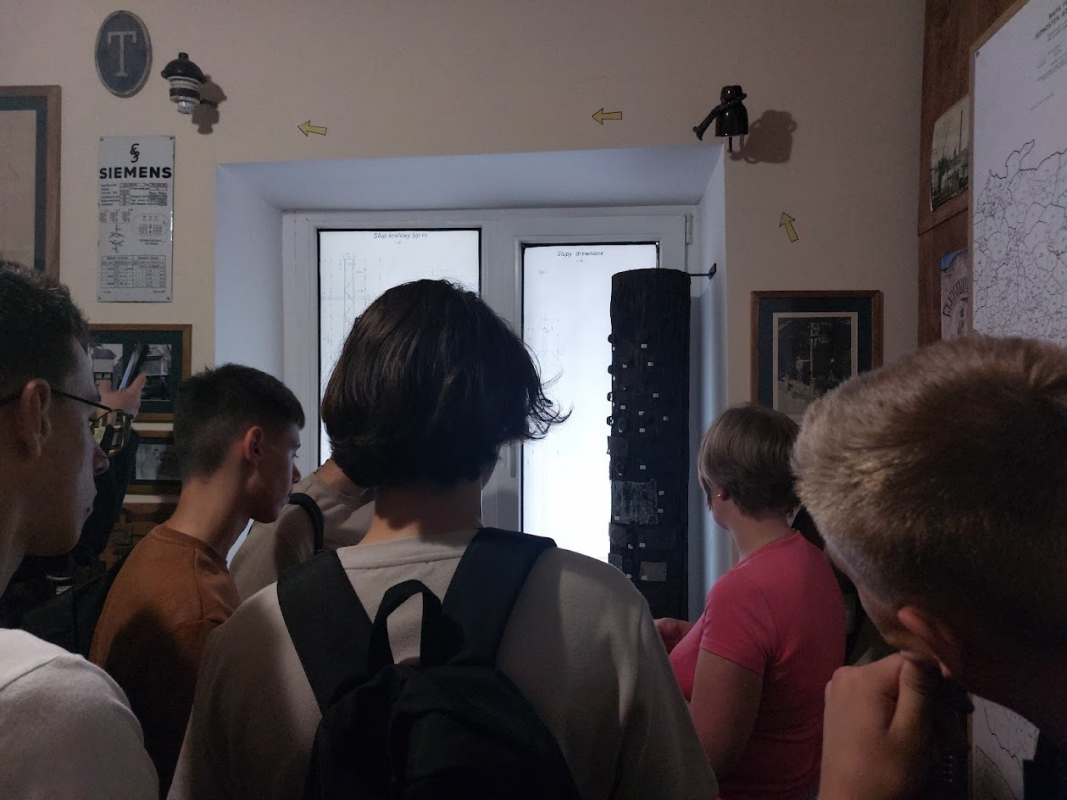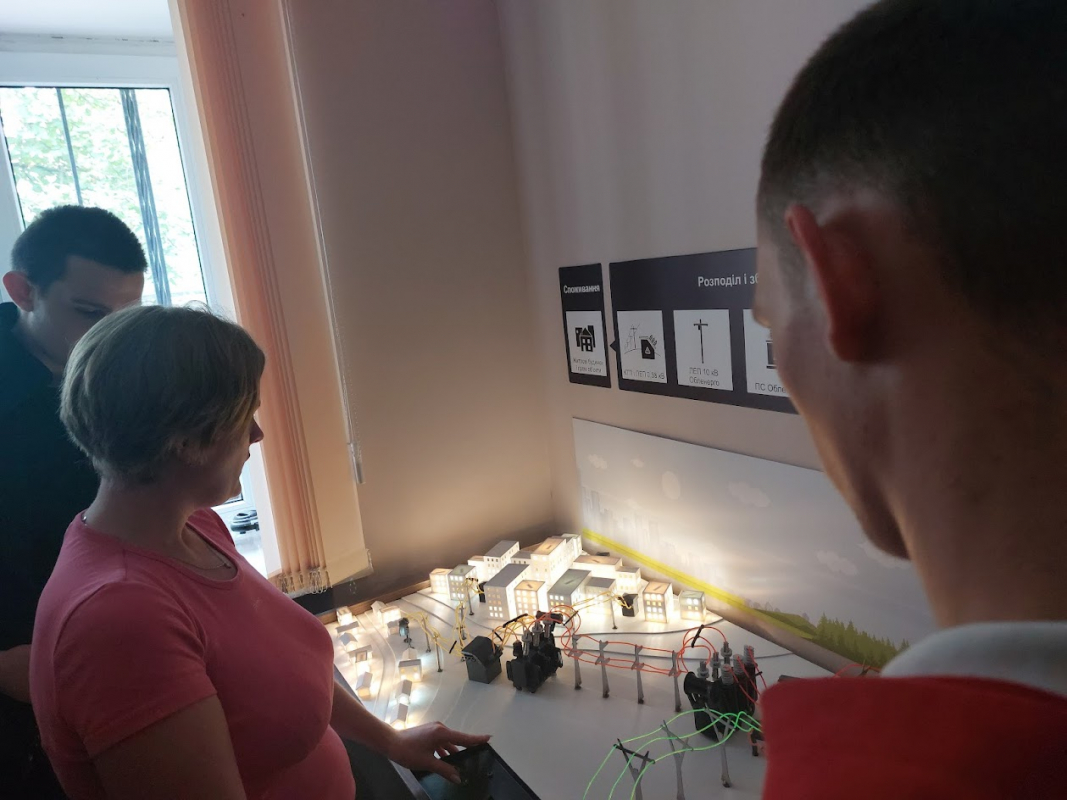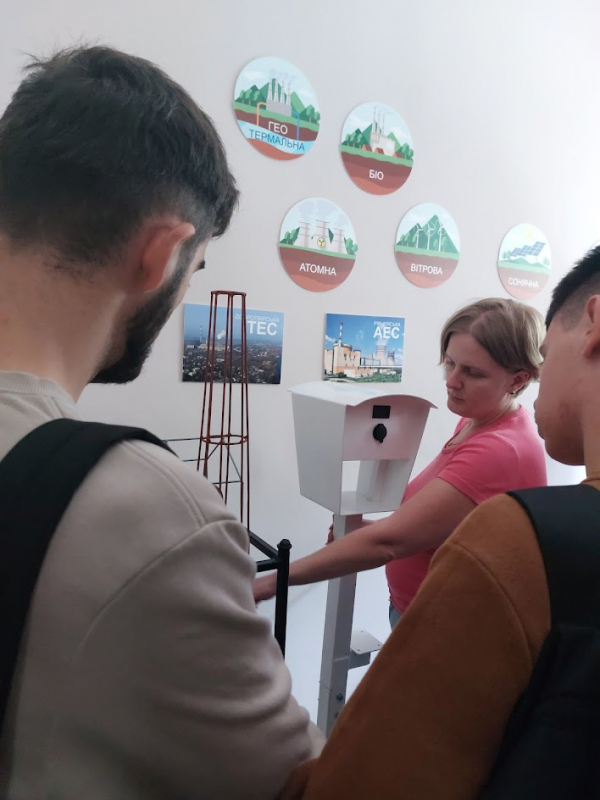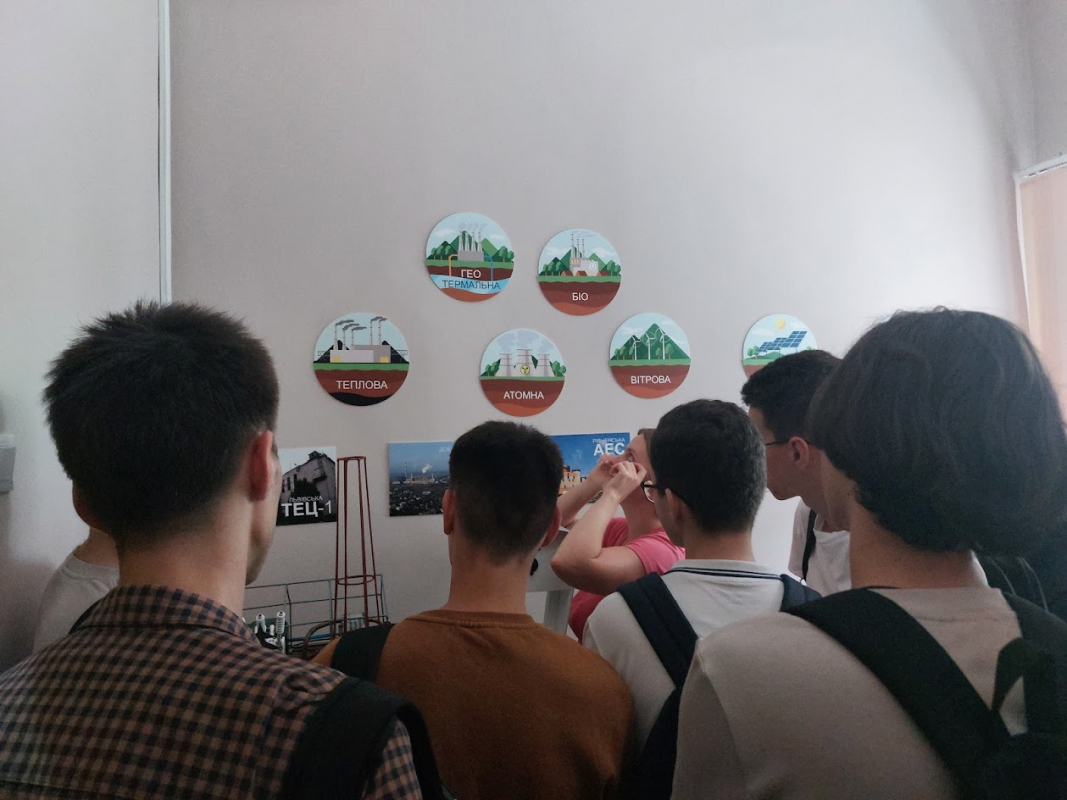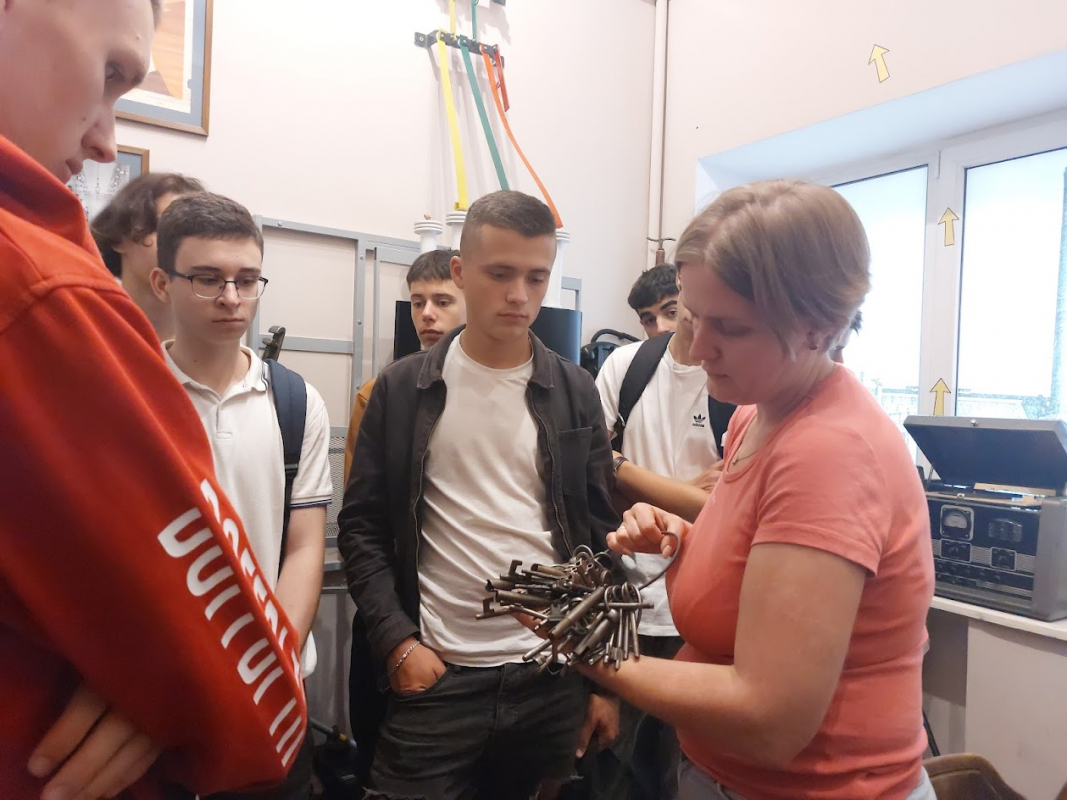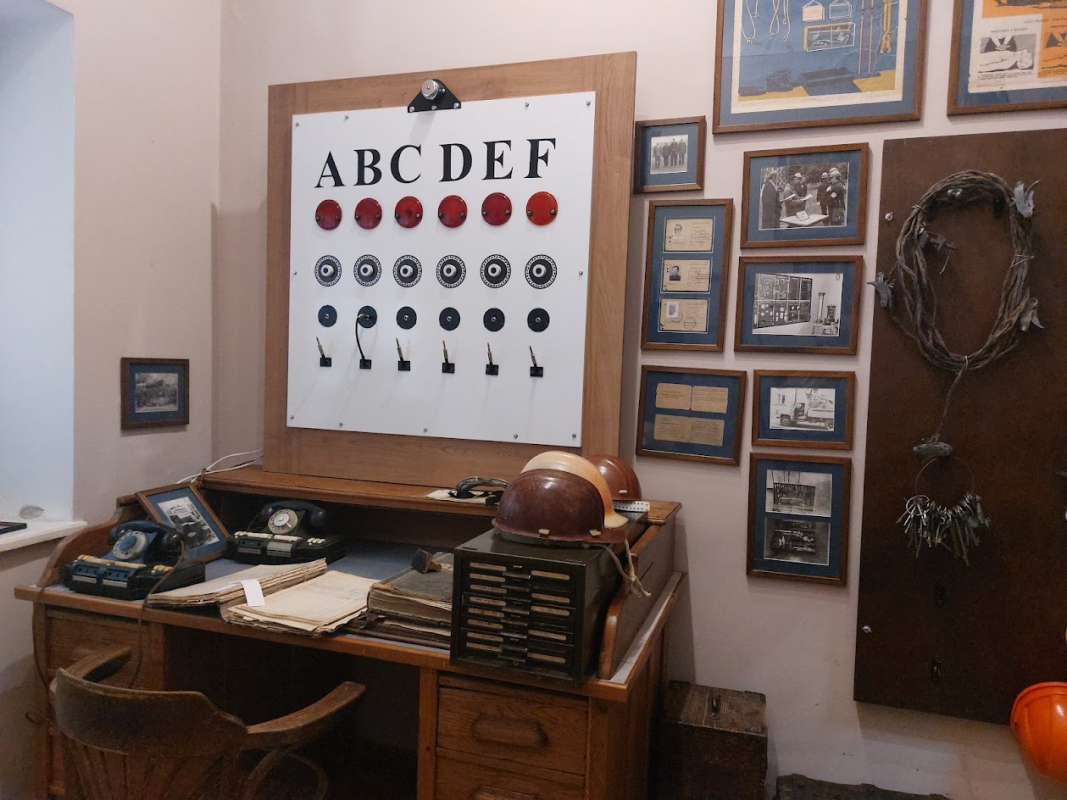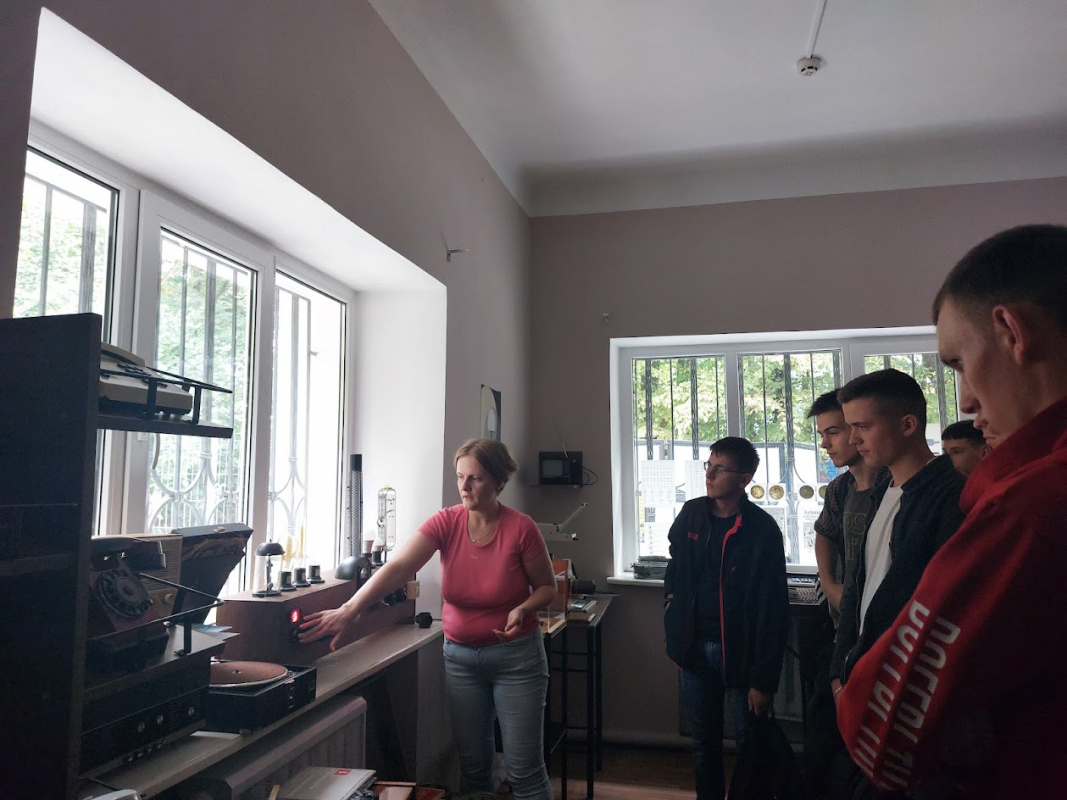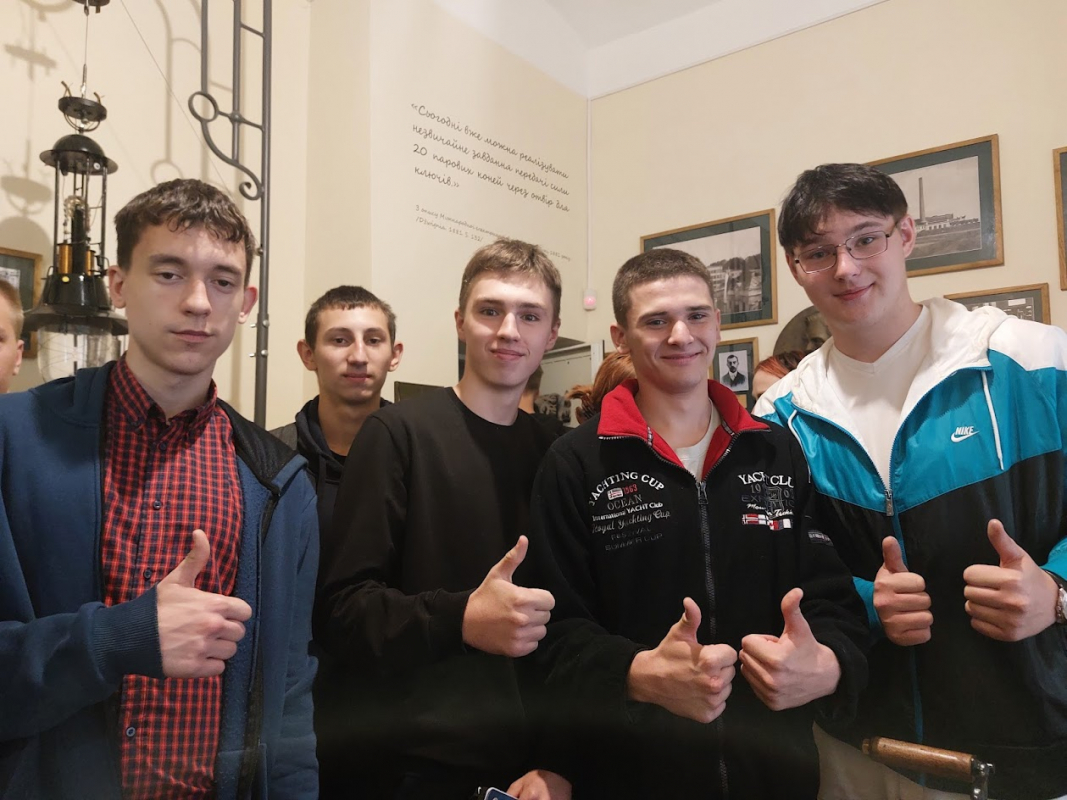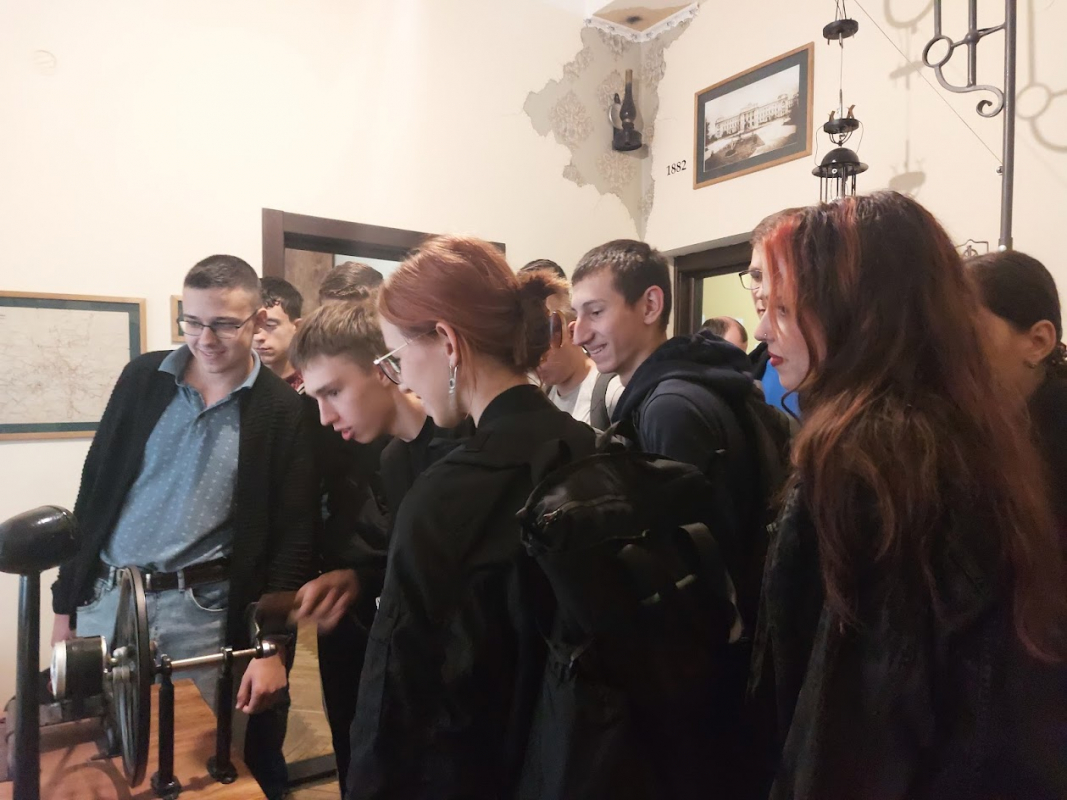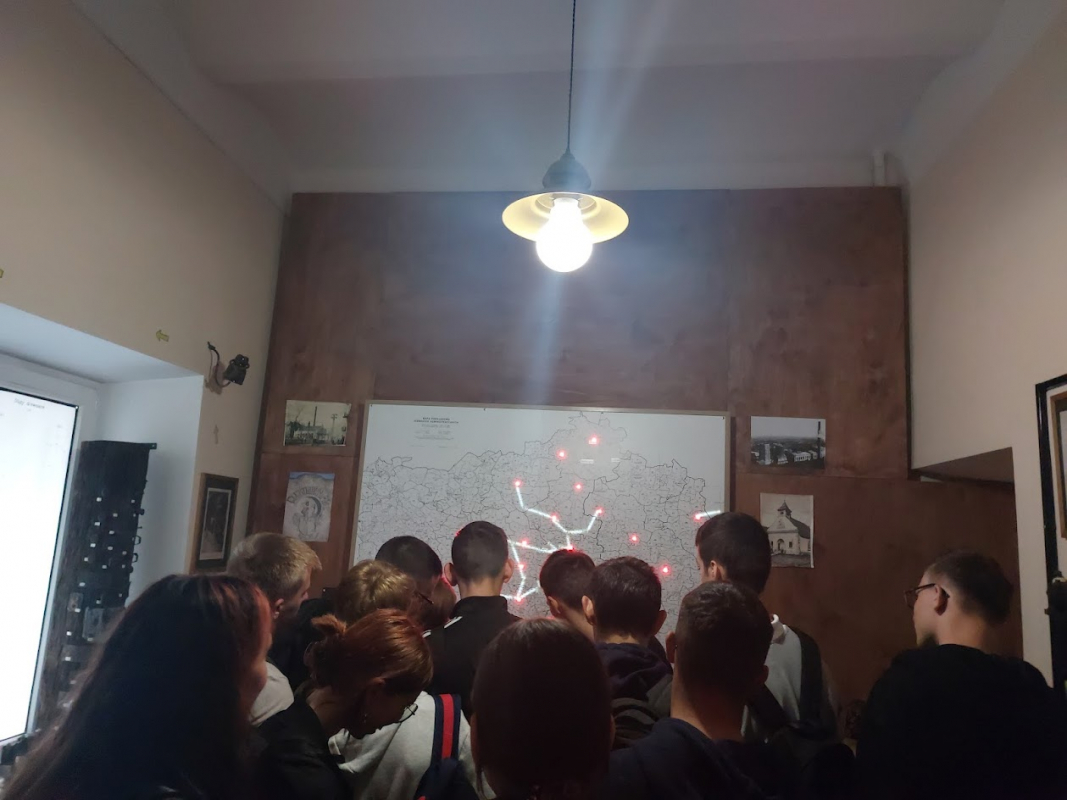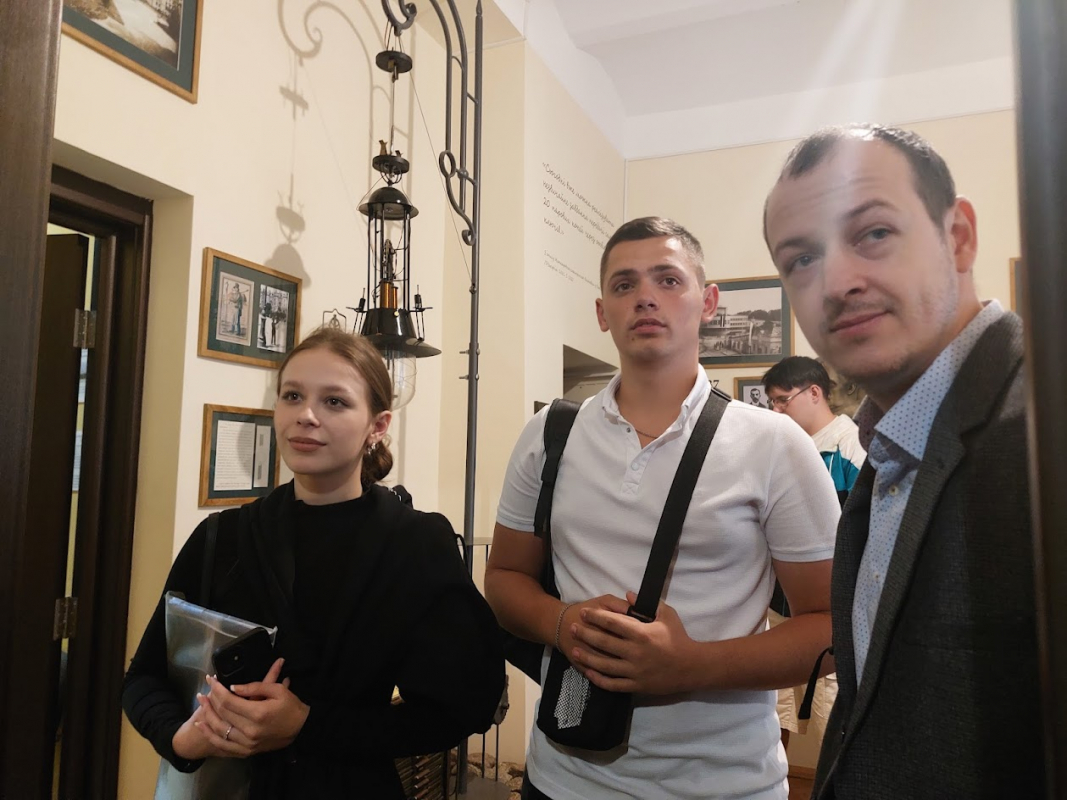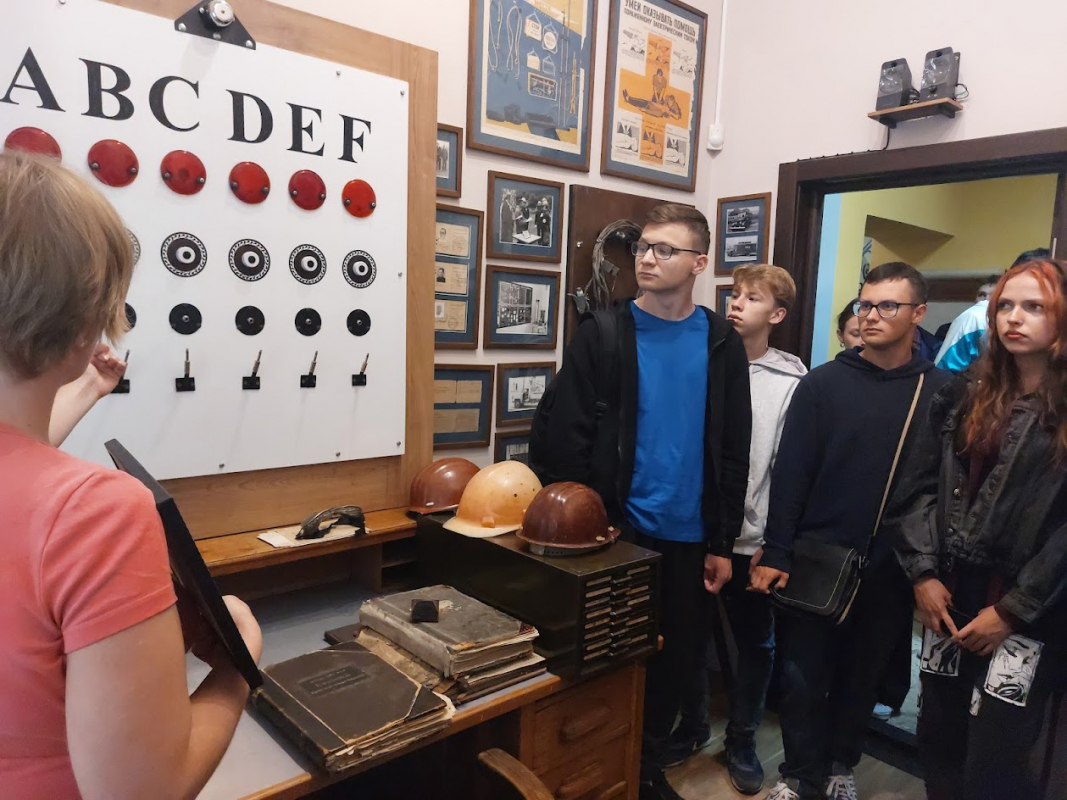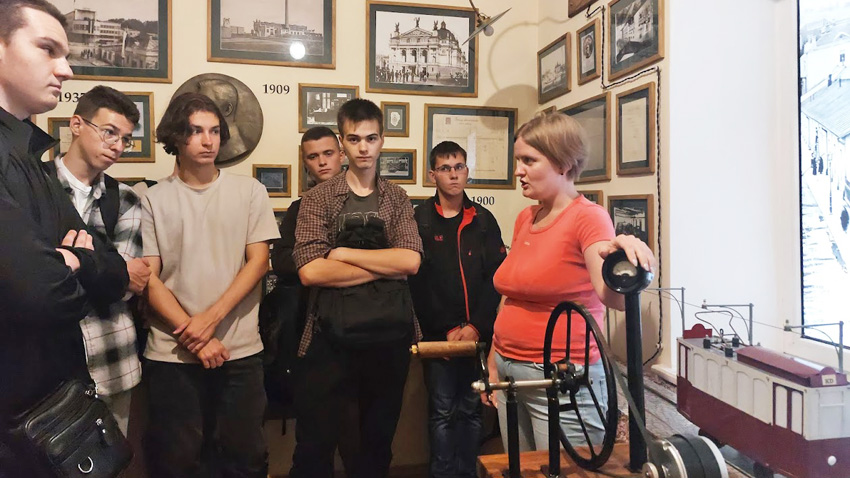On September 12, 2024, 42 first-year students majoring in Electric Power Engineering, Electrical Engineering and Electromechanics, namely groups EE-11 and EE-13 of the Institute of Energy and Control Systems, took part in a public tour of the interactive Museum of the History of Electrification of Lviv Region, which took place as part of the project “European Studies for Technical Specialties at Lviv Polytechnic National University”.
The Museum’s exposition aims to promote the use of renewable energy sources in the region and the economical use of electricity by household consumers in the current difficult times for Ukraine’s energy system. The publication presents the path of electrification of the Lviv region in an accessible interactive form, taking into account both historical facts and modern energy trends. Special attention is given to distributed generation, ensuring the stability and flexibility of the power system by significantly increasing the use of renewable energy in the Lviv region. This is being implemented through joint projects with the European Bank for Reconstruction and Development, as well as attracting additional investments from international companies, including Vestas, Notus Energy and Goldbeck Solar, confirming the growing interest in renewable energy sources in Ukraine.
The first-year students learned that the first time Lviv residents learned about electricity was in 1894, when an electric tram was put into operation. During the tour they heard an interesting story that the first electric arc lamps were installed in 1882 in the Sejm Hall of the Galician Sejm (the current building of the Ivan Franko National University of Lviv). The guide told us that in Poland, electric devices were rented and worked in the then Municipal Electric Institutions (MZE). It was equivalent in salary and prestige to a modern IT worker.
The students also heard an interesting story from the museum's director, Bohdana Berzhytska, who said that the Opera House has been a key element in the electrification of Lviv since the 1900s. At that time, a distribution center and batteries were placed in its dungeon. Not only the theater, but also the surrounding streets were illuminated from the distribution center.
Along with the active electrification of the city, the number of people who wanted to have electricity in their homes also increased. Thus, along with the connection to the power grid, meters were installed, for which the consumer usually paid from 0.5 to 5 Austro-Hungarian crowns, depending on the parameters of the meter.
The Municipal Clinical Hospital on Pekarska Street was one of the first to be connected to the power grid. At that time, not only private homes, but also households and industrial offices were electrified.
The students saw with their own eyes Zygmunt Rudakovsky’s 1908 plan for laying cable lines in Lviv. It has miraculously survived to this day, as have the electricians’ certificates from that time, which gave them the right to free travel for life, a great luxury in those days.
“An unforgettable experience! The Museum of the History of Electrification of the Lviv Region is a fascinating and informative leisure time for students and everyone. We tried to start the first tram with our own hands. We saw how the Tesla coil works. We learned how our ancestors imagined the electric progress. We turned on the first electric lamp in the city and much more,” said Diana Brezitska, Bohdan Baida, Maksym Storoshchuk and Oleksandr Kushnir, students of the EE-11 group.
The museum contains an incredible number of rare items: original pre-war meters, fuses, various diagrams and maps, a mini-tram, a copy of an arc lamp that has been lighting the way for Lviv residents since 1909, a model of a mine, a Tesla laboratory where you can use a Tesla coil to light lamps wirelessly, an electric chair, and much more. These exhibits can be picked up, examined and even tested for proper functioning.
“In the museum you can test a Tesla coil, try to start an electric tram and a power plant, be a dispatcher, and even see an electric chair! We thank the museum staff for preserving and researching history, telling it in an interesting way, and making a visit to the museum a pleasant attraction!”, the students of the EE-13 group shared their impressions.
The students were accompanied by the curator of the EE-11 group, Yurii Biletskyi, Associate Professor of the Department of Electromechatronics and Computerized Electromechanical Systems, the curator of the EE-13 group, Petro Baran, Associate Professor of the Department of Power Engineering and Control Systems, and members of the EUSTS project team: Yaryna Turchyn, Director of the Institute of Humanities and Social Sciences, Lidia Kasha, Associate Professor of the Department of Electromchatronics and Computerized Electromechanical Systems, Oleksandr Markovets, Head of the Department of Social Communication and Information Activity, Natalia Vovk, Associate Professor of the Department of Social Communication and Information Activity, Olha Ivasechko, Oleh Tsebenko, Iryna Sukhorolska, Olena Lukachuk, Associate Professors of the Department of Political Science and International Relations.
The EUSTS project team is grateful to Bohdana Berzhytska, Director of the Museum of the History of Electrification of the Lviv Region, for an interactive, interesting and informative tour that undoubtedly inspired the budding power engineers to study even harder!
The event was held within the framework of the project “European Studies for Technical Specialties at Lviv Polytechnic National University” (EUSTS) with the support of the EU Erasmus+ Jean Monnet program.
More information about EUSTS can be found on the project website within the Lviv Polytechnic Portal.
